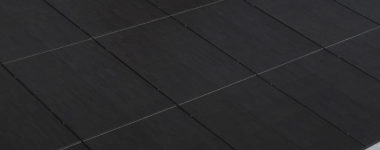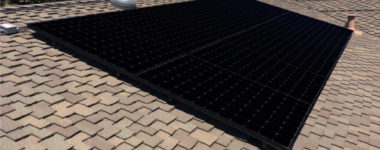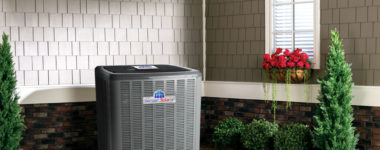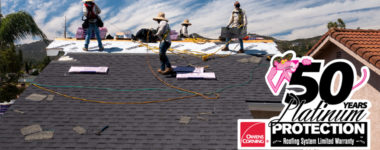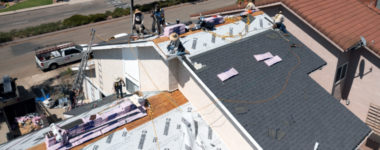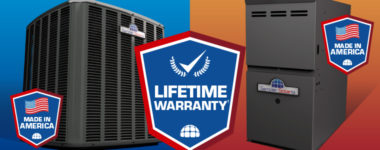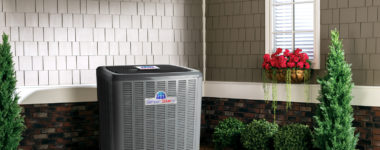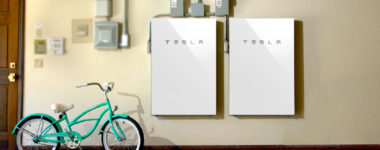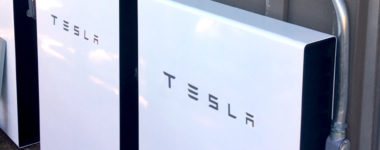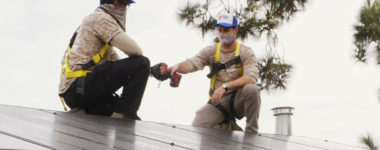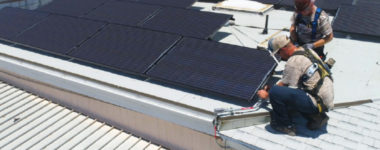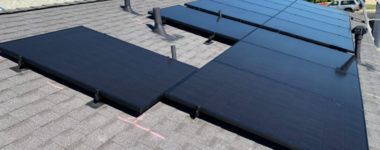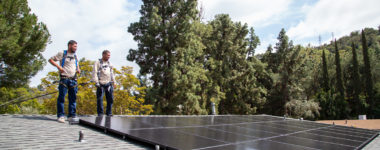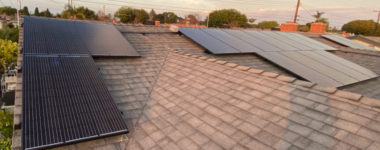Semper Solaris Blog
Solar Power is the leading clean, renewable, and cost-effective energy on the planet. Generating solar energy is a simple process, much like photosynthesis found in nature. Solar panels produce energy by converting sunlight into electricity. And it is one of the most reliable, sustainable, and least expensive ways to generate clean energy. Three main advantages of solar panels They produce clean energy. They produce renewable energy. They are cost-effective. Semper Solaris is at the forefront of solar power technology. We are the top-rated solar contractors for all things solar. We know how much our satisfied customers save every year on electricity. Solar Power Is Renewable Energy Fossil or carbon-based fuels have been the foundation of energy consumption for well over a hundred years. It is the electricity and fuel we use to heat and cool our homes. It is the gasoline that runs our automobiles and manufactures products. We can find it in many things found in our daily lives. Fossil or carbon-based fuels come from the decayed, petrified remains of plants and animals accumulated over millions of years. Once these fuels are exhausted, they take a very long time to replenish—perhaps millions of more years. The emphasis on renewable energy addresses the diminishing reserves of these fuels. There are several renewable sources of energy in use, and they are becoming more prevalent as we move towards a sustainable energy economy throughout the world. Renewable energy comes from sources that reproduce and don’t go away. Renewable Energy Sources Solar Wind Geothermal Hydroelectric Biomass The cleanest and cheapest sources of renewable energy on the forefront today are wind and solar. Solar panels are the most efficient and easiest way to generate a lot of electricity regularly. Semper Solaris is the best solar contractor for the installation of solar panels. We know our business and are committed to bringing our best for clean, renewable solar energy for our customers. Solar Panels Produce Clean Energy Carbon emissions from fossil fuel power plants cause a lot of waste in the air, ground, and water. Carbon, CO2, is a naturally occurring gas that is overproduced in the atmosphere when fossil fuel is burned for energy production, causing an excess of greenhouse gases. Clean, renewable energy does not cause pollution or produce waste. While some renewable energy sources are cleaner than others, solar power is at the top of the list. Solar panels help the environment by reducing the carbon footprint created by carbon-based fuels, thus reducing greenhouse gases. Fossil Fuel Sources Coal Crude oil Natural gas Solar Panels are Cost-Effective Solar Power is the most efficient and least expensive alternative energy for residential use. Unlike other renewable or non-renewable resources, solar is easy to put into operation and takes up no extra space to speak of—especially rooftop solar panels. And solar power is the most dependable energy source of all. You can’t run out of sunlight, especially in California. Solar panels provide access to this fantastic renewable energy from the sun. The equipment is more affordable than it ever has been. When you consider the incentives and rebates available for installing solar, the upfront cost is much lower, and the system will pay for itself in a few short years. But you will enjoy savings on energy from day one. Semper Solaris is leading the way for residential solar installations. We believe in sustainability, protecting the environment, and reducing the cost of electricity so that you keep more money in your pocket. We have seen the power of the savings our customers enjoy every day since they decided to go solar. Call Semper Solaris today and take advantage of low prices and savings.
There are several factors to consider when evaluating solar panels and equipment, including manufacturing, durability, and quality. Identifying the best solar panels is determined by how effective the panels are at converting sunlight into electricity. And aside from the manufacturing of panels, some factors can influence the effectiveness of solar panel installations. Location Climate Shading Size of roof Experience of the installer The knowledge and the experience of the installer are critical in achieving the highest efficiency and functioning of solar panels. Semper Solaris technicians know how to achieve the best performance while offering only top-rated solar panels and equipment. We will design your solar panel system for optimum performance. How Do Solar Panels Produce Electricity? Solar panels are a system of photovoltaic cells linked with metal frames and wiring and connected to your home’s electrical system. The solar cells in each panel transform sunlight into DC power, which is circulated through the panels and into a solar inverter. The inverter converts the DC power into AC Power, electricity for your home. Semper Solaris knows how solar works; we offer the highest quality products and expert installation. We have various options for panels and inverters from the most reliable solar panel manufacturers. How are solar panels rated? Solar panels are rated for power output and efficiency. Most solar panels have power ratings of 200 to 300 watts, the higher the power rating, the more efficient the panels are at converting sunlight into energy. This rating is an excellent way to compare solar panels. Other issues like power tolerance can influence energy production. Semper Solaris understands the power output of solar panels, and we offer only the top-rated solar panels from the most reliable solar manufacturers. Solar Cell Efficiency The number of cells in each pane is directly related to the amount of energy the solar panels create. The cells are made with a semiconductor material such as silicon, which is the most common material used. The efficiency of the solar cell structure is a critical consideration when rating solar panels. The efficiency rating indicates how effective a solar panel is at converting sunlight into electricity. Most solar panels have a rating of around 23%. The higher the score, the more power the panel can generate. Semper Solaris is experienced and knowledgeable in assessing a home for the right panels with ratings that will operate at maximum efficiency. Solar Panel Quality Solar panels are tested for their strength and reliability in real-world simulations. A high-quality panel will carry at least a 25-year warranty from the manufacturer both on material and power production. Durability Reliability IEC 61215 reliability standard Snow and wind load Top-rated Manufacturer’s Warranty The best solar panels are American made. They have proven to be the most reliable, efficient, and superior in design and construction. Semper Solaris offers solar panels that are both high quality and economical for budget-minded homeowners. We stand behind each and every solar panel system we install. Contact Semper Solaris today and schedule an evaluation of your home for your solar power installation.
The decision to replace central air conditioning in your home is a big decision, and you need to consider many factors. But how do you know when it's time to stop A/C repair and think about replacing the air conditioner? Check out this list of things to consider when deciding if it's time to replace your air conditioner at home. Reasons Your Unit is Ready to Be Replaced Increased Utility Bills Increased service bills say a lot about system inefficiency. In the event of problems with the air conditioners, the work efficiency will decrease, and the effect is usually in the form of increased bills. When there are sudden fluctuations in service bills, the problem can easily be traced to an air conditioning system that may need maintenance, repair, or full replacement. The Appliance is Old Every product has a lifetime, and Heating and Air Conditioning devices are no different. Depending on local conditions, the service life may vary, but for the air conditioner, it is usually about 8 to 15 years. For furnaces and boilers, it takes about 15-20 years. Even obtaining device support can be an expensive test because products are no longer available in the industry. If outdated devices are more expensive, then it's time to replace them! The Unit Breaks Down Often Failure or complete failure is a severe problem. Any device that malfunctions frequently or causes frequent questions may require expensive repairs to function correctly. It would be better to invest in a new unit. Fixes can extend the life of the device a little longer, but something entirely new can get rid of problems forever in the long run. Inconsistent Room Temperatures There are many reasons why the temperature is too high or too low when working at home or channel problems or insufficient insulation. Unfortunately, these types of problems usually require Air Conditioning service to fix it. The air conditioning system should increase the comfort of your home. If the air conditioner is operating in the opposite direction, it must be replaced. Humidity Problems in Your Home Your air conditioner must remove moisture from the air circulating in your home. If you notice a steady increase in the level of humidity you are experiencing, the problem may be caused by an ineffective or broken cooling system that needs to be replaced. Excessively wet or dry, this may be due to a malfunction of the air conditioner. The most common problems are poor insulation or equipment malfunction. Depending on the amount of damage caused, the Air Conditioning Repair specialist may make repairs or recommend a full replacement. The Unit Produces Too Much Noise and Smell If any Heating and Air Conditioning device produces a strange noise or smell, this is a sign of problems, and parts of the unit may not work correctly. For example, leaks or burning wires may occur. Direct control can be the right approach to prevent the situation from rising to a dangerous level and take timely actions to avoid trouble. Replacing the Air Conditioner Can Save Money Although replacing an alternating current can initially be a significant investment if you suffer from any of the above symptoms, replacing your air conditioner, in the long run, will save you a lot of money. It will not only avoid expensive repairs but also save energy. If your home has any of these symptoms, check the AC and replace it sooner rather than later. You don't want your house to be uncomfortable and ineffective for too long. The Heating Repair professionals can help you choose and install the best air conditioner for your home.
With the help of solar battery storage, you can keep the excess energy that your solar panels produce during the day. So, it provides you the option to use that stored excess energy as and when you need it. Most homeowners use it during a power outage or other such similar scenarios. However, recently many are using it to control their utility rate and also to increase their savings. Thus, it is no wonder that more than 50% of the US population is considering adding a battery to their existing solar battery installation. When diving into the world of solar batteries, the very first thing which a homeowner notices is a price. So, it is quite natural for a homeowner to know how long the charge of a solar battery will last or what is the life expectancy of the selected/wish-listed solar batteries before going for this kind of significant, long-term investment. How long will the charge on battery storage last for? Well, home solar battery units usually last for 5 to 20 years. In fact, many manufacturers and suppliers guarantee that you won't need to replace the batteries until after almost 30 years from the date of purchase. This development is rather recent, along with the increase in the life expectancy of solar panels. Such an advantage is expected from solar batteries as well. However, it is tough to procure the exact hours the charge of the solar battery in question will last. Based on the type, model, kind, capacity, size of the solar battery, and the amount of charge provided to it, a standard battery charge lasts for 1 to 5 days’ load. Specific batteries, like Tesla Powerwall, will give 7+ continuous days of power.** So, it is quite clear now that the charge will be affected by the types of battery and along with factors known for impacting the solar battery’s lifespan and capacity. Thus, to provide a clearer picture; next, we will discuss the different factors affecting the battery life along with the best types of solar battery known for holding the charge for an extensive amount of time: Types of Solar Battery There are three popular solar battery types which are known for lasting for a long time after a single proper charge, and they are: Saltwater Battery Instead of heavy metals, it depends on saltwater electrolytes. These are environment-friendly and recyclable. Lead-Acid Battery Even with a lower DoD (Depth of Discharge) and shorter lifespan compared to the next type, lead-acid battery works well and is affordable. Lithium-Ion Battery This type is more expensive than both types discussed above; however, it is one of the best options to go with if you are looking for a solar battery that has reasonable charge retaining capacity. Saltwater and lead-acid are indeed great performers; however, the charge of lithium-ion solar batteries will last longer than the other two. Other Factors Affecting Solar battery’s lifespan Solar Battery Charging and Maintenance A solar battery will need charging as per its type, model, and size. Only with the correct or proper amount of charging, one can enjoy the product’s potential to the fullest. Thus, figuring out the charging time/period is crucial. Similarly, taking proper care of the batteries is also essential to ensure it is in working order and is capable of holding the charge for as much time as possible. Solar Battery Temperature The temperature/atmospheric condition of where you live will also affect the lifespan of a solar battery. Thus, protecting and charging the battery adequately is necessary. Solar Battery Usage The lifespan of the battery or the charge holding capacity of a solar battery will depend on its usage cycles. Thus, it is best to go for deep-cycle batteries. They are known for only discharging around 80% of the stored energy before it re-charges. There you have it, everything you needed to know to determine how long a solar battery can hold its charge. So, before investing in a battery, is it advisable to go over the information provided by the manufacturer and suppliers, and take the necessary steps to clear any queries to figure out how long you can expect the charge of a particular battery in solar panels to last.
Whether getting a new house or considering a roofing replacement, the roof material is imperative for the look of a home as well as for the costing department. Since most people are either undecided or uninformed about diverse roofing materials, this article will explore and cover the most popular roofing options. Asphalt Shingles Asphalt shingles are the most common roofing material holding a statistic of 70% of all single-family houses in the US because they are so easy to install that even one person can install them single-handedly. Asphalt shingles are still dominating the market because they are super affordable and durable enough (easily lasting from 15 to 40 years). There are 2 types of asphalt shingles: organic and fiberglass shingles, each having their own look and advantages. While the fiberglass one starts with a fiberglass mesh that is covered in asphalt and topped with granules, organic shingles, on the other hand, offer better stability being built from recycled paper saturated in asphalt and coated with granules. Pros of asphalt shingles Fiberglass shingles provide fire protection Friendly-looking stylish appearance Cheaper than other materials and still durable Wide-ranging selection of colors and styles to perfectly fit the house look Cons of asphalt shingles Frequent Roof Installation might cost overall higher than metal or slate materials Frequent weather changes can cause cracks to the asphalt shingles If one layer needs replacement, all layers must be torn off the roof Wood Shingles and Shakes Wood shakes are the most elegant out of this list, consisting of pine trees, cypress, redwood, and cedar. All these types of wood combined do not only offer a natural, timeless exterior but a sound insulation system as well if installed correctly. Wood shingles are machine-cut pieces providing a smooth and clean surface and uniform edges, while the hand-cut wood shakes bring a rustic-style look, and they are also more expensive due to thicker wood. Pros of wood shingles and shakes Last longer than asphalt shingles Offer natural and organic beauty style Contain natural oils making them resistant to insects and moisture Can be recycled Has twice the insulation effect of asphalt shingles Cons of wood shingles and shakes Pine tree wood is vulnerable to insects so it might rot faster More expensive and harder to install than asphalt shingles Wood shingles need high maintenance if untreated Metal Roofing The cons of metal don't have to be mentioned as everyone knows it can last a lifetime, it's resistant to both fire and insects and keeps the temperature of the house low by reflecting the sunlight. Metal roofing is manufactured in rolls bringing various options like traditional metal roof style and tiles look-alike roofing. However, most are still rigid sheets with vertical panels and modular panels roofing. Usually, the metals used are Zinc, cooper, lightweight steel, and processed aluminum. If speaking of cons, all these advantages come with the highest price in the roofing department with the cooper roof leading as the most expensive roof material. Metal is much noisier than other materials when it rains. Despite the durability monopoly, when hit by heavy objects, metal is likely to dent, and replacing it would be very costly. However, such cases are rare enough to conclude that over time, continually replacing and repairing other types of roofing materials, might cost higher than metal roofing overall. Roof Tiles In the roofing business, tiles are number one in terms of the variety of colors and architectural styles. Unlike the past, when there was only one option considered ancient nowadays, today, roof tiles count three versions: durable traditional clay tiles, stable but easy to work with concrete tiles, and fiber cement tiles made for lightweight strength. Roof tiles make great replacements to fire-prone locations, are resistant to moisture, insects, and fire, and most importantly, provide high insulation and energy conservation. On the contrary, this type of roofing is quite expensive and might also crack underfoot. Now that you know everything about the most popular roofing materials, feel free to contact the best roofing company in California and get a roofing contractor to choose and buy your favorite roofing with us here at Semper Solaris.
When it comes to choosing a roofing contractor, some property owners go for random service providers, and they end up getting substandard services. Some roofing companies are unreliable and unskilled to offer quality roofing services. Roof services such as installation, repairs, and replacement require skills, which are not quickly earned. Therefore, you should take the time to find the best contractor for your roofing project. Benefits of hiring professional roofing contractors Increased Safety Accidents from roofing projects are common in the country. Working safety should be maintained during roofing projects to avoid unnecessary risks. Certified roofing contractors pay attention to the safety concerns of their team members during a project and reduce the chances of accidents. Roofing Materials The quality of materials will affect their lifespan. A roofing company has access to high-quality materials, which helps to avoid the need for regular roofing repairs. Some hardware stores only offer substandard materials, which may not withstand harsh weather conditions. Saving Money Some property owners believe that doing roofing work on their own can help to lower roofing costs. However, due to lack of the necessary skills, property owners may end up causing more damage to their roofs. Fixing the damages may cost more than the cost of hiring a professional roofing company. Quality Services Experienced professional roofers have handled many different projects and are knowledgeable about various problems that they may encounter during roofing projects. Therefore, they will offer quality installation, repair, and replacement services. How do I Select the Best Roofing Company? Roofing is not an easy task, and you need to leave it to experts. Ensure that you only hire the best roofing contractor to get the job done right. The following are insights to help you choose the best roofing firm: Ask about Experience Ensure that you pick a contractor who is experienced in roofing work and with a proven track record. Also, check the company's reviews and see what others have said about their service. Such firms do not pay attention to quality when offering services and do offer value for money. You can avoid being a victim of such roofers if you choose experienced firms with an excellent reputation. Licensing and Valid Insurance Roofing jobs are risky and hence the need to hire specialists as they have the materials, tools, and equipment needed to do the work safely. A professional roofing contractor is authorized by the relevant authorities to offer their services. Additionally, certified roofing firms will have the required insurance coverage for their workers. If work-related accidents occur, the policies will cater for the medical expenses. Look at Previous Projects and Reviews Before you hire a roofing contractor for your project, ensure that you check some of their past work. Again, reviews left on Yelp and Google My Business may come in handy when choosing the best roofing company for your next project. You can also contact Semper Solaris for all of your roofing needs. Our years of experience, combined with excellent customer service, will bring you the best results for your roofing project and any other home improvement projects you have. We also specialize in solar, solar battery storage, heating, and air conditioning.
Air quality is a significant factor that should be considered to maintain the productivity health and comfort of the workers. If air quality or temperature is compromised or is not maintained, you may experience an effect directly on productivity, health, and comfort. Homes today would not be a home without a Heating and Air Conditioning system, but what goes into the system that keeps your home fresh in the summer and warm in the winter? Let's discuss the basics of Heating and Air Conditioning equipment, purpose, benefits, what steps to be taken to maintain these systems, etc. What is HVAC? HVAC stands for – heating, ventilation, and air conditioning. It is an essential part of homes, apartment buildings, hospitals, vehicles, etc. and its goal is to provide thermal comfort and maintain air quality. Let us discuss the purpose of Heating and Air Conditioning in detail. As we know that a Heating and Air Conditioning system is used in a commercial and domestic environment, it helps to provide the following support to the occupants- 1: Control Temperature (Thermostats) The individual wires of thermostats are connected with the system that automatically adjusts the room temperature. You can also manipulate the thermostats sensor and set accordingly. This whole system can save you money, time, and energy. 2: Supply fresh air The Heating and Air Conditioning system helps to supply fresh air to the occupants in the room. The clean exterior air is introduced inside, and the carbon dioxide is dramatically reduced. This allows occupants to stay comfortable and productive. 3: Air filtration In the heavily air-conditioned environment, the conditioned air can carry contaminants that can contribute to respiratory illness. This is again where Heating and Air Conditioning plays a very crucial role by removing these contaminants or dust from the air with the help of filters. This feature is very vital in homes that have members with asthma or respiratory problems. 4: Economical The Heating and Air Conditioning system is energy efficient. These systems may include the use of: Variable air volume VAVDigital control systemComponents created to operate in low-pressure ECM fan motors claimed heating and cooling mechanisms. There may be some other systems, but all those systems are designed by keeping energy efficiency in mind. Now, by learning the purpose of Heating and Air Conditioning, we can make understand the significance of the system. Heating and Air Conditioning Components The Heating and Air Conditioning system includes the following components You may want to note that these components or equipment are all necessary, which helps to contribute fresh air supply and maintain the temperature of the indoor environment. Mixed-air plenum Air filter Supply fan Outdoor air control Outdoor air intake Exhaust Ducts Return air system Terminal devices Self-contained heating and cooling unit Heating and cooling coils Boiler Cooling tower Control Humidification and dehumidification equipment Water chiller How to maintain a Heating and Air Conditioning system Air Conditioning Service and Heating Repair can save you replacement cost plus it can also help to make the occupants happy, comfortable, and productive. At last, it is not about the equipment but people. So, here are some common ways that could help you maintain your Heating and Air Conditioning system: Visually inspect the entire Heating and Air Conditioning system. Change your filters every 2-3 months. Do not clean your condensing unit or try to A/C repair with a pressure washer, as it will damage your unit permanently. Air Conditioning Repair can be tricky, so avoid cleaning it yourself and call for professionals. Keep a check on the settings of your thermostat. Heating and Air Conditioning systems have a furnace, circulation units and compressors which require lubrication from time to time to reduce friction, do not skip it.
Heating and Air Conditioning unit A Heating and Air Conditioning unit includes a mechanism for releasing moisture that gets formed and built up in the closed interior where the heating or cooling is taking place. It is, therefore, the Heating and Air Conditioning system that is referred to by Heating and Air Conditioning, which stands for heating, ventilation, and air-conditioning. Some units give off heat with a furnace, which mostly runs on gas while the air conditioner is powered by electricity. This is an integrated setup that looks like a single unit. However, the ducts and vents work as the extended part of the main structure. As the Heating and Air Conditioning system performs multiple functions with equipment for each of these functions integrated into the primary Heating and Air Conditioning system, it often develops snags and glitches, mainly if annual maintenance of the Heating and Air Conditioning system has not been carried out. Since buying a new Heating and Air Conditioning is a cost-intensive decision, it is recommended to engage a contractor who can work out the exact need and suggest the right model and capacity of the equipment. A/C repair However, these machines keep working day and night, they sometimes develop snags and glitches that need to be repaired. Among the common problems that may necessitate an A/C repair include: blowing hot air moisture around the A/C strange noises a sharp, pungent odor outside fan not working A/C not turning on Air conditioning repair may not cost if the problems are fixed right at their onset. Semper Solaris offers A/C repairs for all types of air conditioning units, no matter who previously installed it. Heating repair Heating repair may be necessary if problems like if filters were getting too dirty to allow hot air to pass through. This will overheat the filter. In this case, the AUTO will stop the blower, and there would be no hot air through the duct. Another problem with the heating apparatus in the Heating and Air Conditioning is the malfunctioning of the thermostat. Other issues could be the tripping of a circuit breaker or a fuse blowing off. Even after adjusting the thermostat, if you don’t get the right temperature in your room, you may need the services of an experienced technician. Why you need a Heating and Air Conditioning setup? Heating and air conditioning provisions form an essential aspect of building a modern house. In many places, one can’t even imagine a home without such systems in place. Instead, in some areas, you absolutely need these amenities to work reliably and at capacity for the minimum level of comfort and hassle-free living. Having a Heating and Air Conditioning that fits the needs of the house or the building is mostly a one-time decision. Once you have this setup, this is designed and engineered to work most reliably for an extended period. Usually, this would not malfunction beyond some parts getting dirty with dust, or a circuit breaker tripping or a fuse blowing off, all of which can be solved easily by the in-house electrician. If the problem persists, you may require a specialist to look into the issue. The Heating and Air Conditioning system is expensive equipment that could cost more than you would think and can go up as per your needs. However, with deals, coupons, and a reliable Heating and Air Conditioning contractor, once you have this system, it will require only minimal repairs.
As per some recent studies, most homeowners believe that having a solar battery storage installation along with solar panels is one of the best ways to enjoy all the advantages that solar energy has to offer. With the help of a solar battery, Americans can store excess energy yielded by their solar power system. However, the fact that batteries are complex and volatile cannot be ignored. Thus, comes the question: "Is a home, or more specifically your home, suitable to have solar battery storage?" Battery Storage Safe for Homes Well, if you are dealing with a certified solar battery from a reputable manufacturer/supplier, then you can be rest assured that they will be safe to use. Even if the solar battery is generally considered safe for most Americans, it is still advisable to understand the safety implication of owning a home solar battery. Once you enter the world of home solar batteries, you will see that there are top three contenders. Lithium-ion batteries, lead-acid, and saltwater batteries come with their own set of pros and cons. However, it is safe to say that all these three types are compatible with most standard home solar systems. So, you cannot go wrong as long as you choose any one of these three as your home solar battery storage option. It is essential to mention here that if you go for lithium-ion batteries (the most popular choice), then make sure that the one you pay for is of high quality and is installed correctly. This type will only become a safety risk than alternative technologies when they are of low quality and/or is not installed correctly. The issue mentioned about lithium-ion solar batteries may sound risky. But, with proper installation and with the best product, this can be avoided easily. So, here comes the necessity to know how to procure the best solar batteries and how to properly install them so that you can keep your home safe. Choosing a High-Quality Solar Battery Most batteries available in the American market are produced by established manufacturers. So, you can expect that the batteries will meet all the general industry safety rules and regulations to be sold for homes. The batteries will come with certificates proving that they will be safe for your home, so do make sure to look into it before paying. If you have a problem with shopping by yourself, then you can let your installation company suggest the appropriate one. Choosing a Reputable Solar Battery Installation Company Going with a reputable battery storage installation company is a must to ensure that you have the best product which is being installed accurately with experienced hands. Even though it may look easy, but installing a solar battery required specific skills and electric expertise. Hiring a qualified professional company is advisable as they can offer you the help you need to make the battery safe for your home. Only with the assistance of a professional, can you get the best recommendation as per your home and solar power system. They are certified experts having state-of-the-art equipment to take on the installation process effectively. They follow safety protocols while providing their affordable services to ensure the homeowner's property is not damaged. Semper Solaris is the #1 supplier and a certified installer of Tesla Powerwall, the most intuitive and easy to use lithium-ion battery on the market. Powerwall combined with an existing solar panel system, or the electrical grid, can save you money and power your home with clean, safe energy all year long.
Solar battery storage like Tesla Powerwall can be useful for homeowners even without solar panels as they are paired with a typical solar energy system of your home. By using the technology of a small scale energy storing system in the storage system of the solar batteries at your home, your battery can provide backup even without solar panels as it will be charged by the power supplied by the grid. Need for installing solar battery at home The need for solar battery installed in your home depends mainly upon how your solar power can adjust your utilities. Full net metering is offered by most of the utilities, which allows you to get credit on your power consumption bills for every unit of electricity produced by your solar panels. So, if you install a solar battery, then you may not be able to save more money on your monthly electricity bill. But, a solar battery can increase the savings on the solar panels installed in your office or home in many circumstances. If you have to pay demand charges at the rate of the time to use or net metering is not offered by your utilities, then you can save a lot of money by using solar batteries. Suitability of solar batteries in the ecosystem of electricity Though the technologies used to store solar energy have not gained enough popularity, still you cannot ignore them in the present time. The demand for saving energy is increased at a faster speed because of the benefits provided by solar batteries to the homeowners. The ability of the solar batteries to store renewable energy to use later on can also be used for the entire grid of electricity if used on a large scale. The technologies of energy storage used in solar batteries can provide flexibility to the users of energy to generate electricity with the help of solar power and use it. The task of grid managers and electric utilities is a bit more complicated. They have to provide reliable and constant access to electrical power to their customers to power their businesses and homes. And for this purpose, they will have to be sure that the grid has enough ability to meet the needs of their customers. Most probably, their customers may not get any power supply at a point of time if the system has too much or too low power supply. It can be more challenging to balance the demand and supply carefully if the grid is combined with the sources of renewable energy as solar panels can produce electricity only when the sun shines. The output of the causes of renewable energy cannot be increased with the increase in demand like the traditional power plants based on natural gas or coal, as you cannot compel the sun to shine brighter to produce more energy or shine at night. In this way, the flow of electricity from the sources of renewable energy can be increased by installing more technologies to store energy like solar batteries, etc. In other words, battery storage at your home can provide your power supply even without solar panels.
When you have decided to install solar panels on the roof of your home, then you will have to consider several things before installing solar panels, including solar panel maintenance, types of solar panels, etc. Asking the right questions is essential when installing solar panels. Here's a list of what questions you need to ask to make sure you cover all your bases. Questions to consider when wanting to install solar panels Is the type and shape of your roof right for installing solar panels? This question will allow you to know the suitability of the type and shape of your roof in this regard. Usually, you can find roofs with slopes on its two sides, which meet at a point on the top. But you can also find roofs in various sizes and shapes in the US, including mono-pitched shed, curved, lean-to, mansard, flat, dormer, hip or pyramid, etc. Whatever the type of roof, the critical thing to consider is which roofing company to hire. Also, you need to provide enough space to install the solar panels and must get enough sunlight. Can your roof support solar panels? The next important thing to consider before installing solar panels is the support provided by your roof to them. It will allow you to know whether your roof needs to be replaced or repaired if it is old or damaged. So, before installing panels, it is better to fix the defects of your roof so that it can support the panels properly. It is necessary to make your roof structurally strong as it has the bear the weight of the solar panels also. How energy efficient is your home? Along with ensuring the condition of your roof, you should also focus on whether your home is energy efficient or not. You can quickly improve the energy efficiency of your home in an affordable manner before installing solar panels. If you have improperly sealed doors and windows, old HVAC system or insulation this would qualify as insufficient. It will allow you to install a smaller solar panel as your energy consumption will be reduced. What about warranties? Many companies offer different types of warranties to ensure the quality of their solar panels. You must know the cover provided by the warranty so that you should not spend any more on them if anything happens to them throughout their life. These warranties can vary by manufacturer, but they usually cover the performance of the equipment produced by them. Which direction is the slope of the face of your roof? The slope of the face of your roof should be in the direction of the sun so that it can absorb as much energy as it can from the sunlight falling on the solar panels installed on it. Your panels will not be able to produce maximum solar power if the slope of your roof is not sun-facing. It is essential to place the solar panels on a south-facing surface of the roof to get the best results. You can also install solar panels on your roof if some of its parts are west facing. Sometimes, the north or east-facing surface of the roof can also be used for installing solar panels depending on its azimuth and pitch.
Solar panels are the best sustainable source to save energy. Solar energy, being one of the largest renewable sources of energy, can be converted for electricity as well as other sources of power in the household. Solar panel installation in one’s home is undoubtedly cheap, which provides an unlimited source of energy. Still, it does require a minimum amount of care for it to function correctly for long terms. Why Care for Solar Panels? In general and simple words, solar panels are generally glasses that are systematically installed in one’s household to absorb the solar light. The more solar light this tool absorbs, the more it converts that light into forms of energy and store in it a battery. But since the solar panels are always installed in open spaces, they are prone to some external damage. These damages are not really serious but are external forces that obstruct the glass surface and stop it from absorbing the sunlight to its fullest extent. These external forces can include dust, dirt, and spots because of water in the atmosphere, rain, bird droppings, or cracks because of hail or some other objects and much more. These factors might look like issues that can be overlooked, but in reality, it obstructs the solar panels from functioning correctly, therefore, solar maintenance is an absolute necessity. Solar Panel Care Guide It might sound hard to accept, but the only time one cares for their solar panels are during the times when something damages it really bad, or the tool completely stops functioning. This increases the cost of solar panel maintenance, moreover, gives extra headaches since several appliances might work with the support of solar panels. Therefore, it is of utmost importance to care about one’s solar panels, and it should be done as regularly as possible. According to every solar contractor in the market, it is highly advisable to check one’s solar panels at least once in 6 months. This period is an ideal gap for regular solar panel care since the weather changes every 3-4 months, and a solar panel can adjust that much of change or damage. Moreover, it is not just the glasses that need care and has to be checked. Instead, the screws and hinges also need enough checks and care as they are always at a risk of getting loose or rusting due to environmental factors. Another thing to consider for solar care is to continually check the solar batteries that are connected to the panels. This battery is highly complex, and a regular checkup saves it from complete damage since it is one of the vital parts of the whole solar panel system. Other than this, regular checkup of solar batteries protects the entire house from significant risks, like that of fire, since it converts and transfers electrical energy into the household. At-home care and regular checking of the solar panels can be done by the individual itself. Still, it is usually advisable to call a solar contractor for professional support or if you are not comfortable enough to get on your roof to do the maintenance.
The Capital city of Sacramento is the hub of California’s objective to reduce greenhouse gas emissions and dependence on fossil fuels. With the seven climate change pillars pointing the way, California is the leader in the development of renewable energy. The Pillars are an aggressive plan for cutting fossil fuels and achieving the goal of 50 percent renewable energy by 2030. If the saying is true that there is nothing new under the sun, then harnessing the power of the sun is nothing new. And we have the technology to utilize it and make it a viable energy source. It is a TechnoNatural phenomenon that solar technology converts sunlight to energy, and much like the process of photosynthesis transforms that energy into electricity to power our homes. Semper Solaris is the best solar company in Sacramento for installing solar for your home. We are at the forefront of promoting technology and innovation that is changing the way the world works. Whether it is lowering your carbon footprint or pollution or any other problem solar solves, solar is the energy with the future in mind. Looking to Solar Power The goal of achieving 50 percent of energy from renewable sources is a worthy goal. The reach of solar power in Sacramento goes beyond the purposes of California. Solar power is the most cost-effective and efficient energy source for solving a variety of problems at home and in the world. The cost of producing solar power when you compare it to fossil fuels is meager. Unlike fossil fuel power plants, solar power leaves no toxic waste in the air, water, or land. Solar energy is portable and can be dispatched quickly and easily. Solar power reduces air pollution Solar as an energy source improves water quality Protecting the environment protects your health Solar energy is a key player in fighting poverty. Solar power is helping the homeless. Solar provides power in emergencies and disasters. With credentials like these, solar power holds first place as the power source for the betterment of the world. It makes sense for homeowners to switch to solar power in Sacramento as the model city for clean and renewable energy for the future. WHY SOLAR IS THE BEST ENERGY ALTERNATIVE Future technology will increase the demand for more and more electricity to run our smart homes, appliances, and equipment. Cars with EV stations will be the new normal in the not too distant future. Our smart homes are about to become more intelligent and will need more energy. Solar power is, by far, the most economical and most straightforward way to deliver more electrical power efficiently. Solar power can answer the need for more energy. Solar can help solve big problems in the world. Solar power is the energy source for the future. Solar power is cost-effective, Solar power is sustainable We at Semper Solaris believe that solar energy is the best alternative to fossil fuels. Solar can provide exponentially more electricity without a negative impact on the environment. We are on the frontlines of renewable energy technology and innovation. Call Semper Solaris today if you don’t yet have a solar panel installation in your Sacramento home. Now is the perfect time to join the future of renewable solar energy. Help solve world problems starting in your town, in your home.
In Rancho Cordova, beautification efforts are underway. This once upon a time gold rush town turned tourist attraction will be a bustling center for West Coast events and meeting spaces for both local, business and travelers alike. Nature is plentiful, and many attractions keep visitors busy. From local venues and accommodations to hiking, biking, or rafting on the American River, there is always something to do. As the city looks for ways to clean up the air and water, solar power is becoming the go-to renewable resource for lowering its carbon footprint and improving the environment. Residents of Rancho Cordova are switching to solar and wondering why they didn’t do it sooner. And solar panels on rooftops are changing the look of their town. Semper Solaris has years of experience installing solar panels in Rancho Cordova. We are pleased to bring the best that Solar has to offer to this city. Why Solar in Rancho Cordova? Renewable energy is the centerpiece of a clean and sustainable environment. It is a good step for creating a clean energy economy as well as maintaining clean natural habitats and green spaces. Solar is the most cost-effective and accessible renewable energy in Rancho Cordova. It can be mobilized quickly without adding infrastructure to support it. It sits on space that takes up no extra space. With the bonus of shrinking electric bills, Solar power installations are a welcome visitor to Rancho Cordova. Solar slashes the cost of electricity Solar does not cause waste or pollution Solar is easy to install Solar panels require little maintenance More ways to benefit from solar With technology and innovation, there will be more and more ways to use this plentiful resource. You can further the savings by expanding the utility of your solar panels for maximum benefit. Get More From Your Solar Panels in Rancho Cordova Download smart apps to monitor your solar panel output, and your usage to ascertain the most productive hours. Utilize the high energy-consuming appliances during your solar panel’s most productive hours. Use Energy Star appliances - nearly 40 percent less energy. Keep your panels clean –to prevent a reduction in energy yield. Make sure to trim trees and foliage, so they don’t shade your solar panels from the sun. Expand the Usefulness of Solar Heat your pool and spa or even a sauna without breaking the bank Add extra solar panels to expand the potential of your panels to power future innovations in smart home technology Store auxiliary power with a Semper Solaris Battery Backup system to meet nearly 90 percent of your energy needs and have power if the grid goes down. Add an EV Station if you plan to buy an electric car. (this is where a backup battery can save the day) Semper Solaris is the best solar contractor in Rancho Cordova to help the city and its residents improve the environment through solar power and its many benefits. We have a reputation for excellent customer care, and our technicians are the best in their field. Experienced and knowledgeable in all things solar, Semper Solaris is the right choice. Contact us today for a free evaluation for a solar installation.
Elk Grove is a quiet, friendly suburban town in Sacramento County. With young professionals and their families living in this highly rated town, Elk Grove is considered one of the best places to live in California. Elk Grove is committed to the environment and renewable energy. They protect endangered species and habitats and is the home of the Stone Lakes wildlife refuge. This attention to preserving the environment and conservation makes it a healthy and safe place to raise a family. More and more Sacramento County homeowners are switching to solar power as the alternative energy of choice. Semper Solaris is the best Solar Company in Elk Grove. We are standing by to help Elk Grove homeowners take advantage of our many financing options and financial incentives available to offset the cost of installing solar. Solar Power to the Rescue in Elk Grove Those of us who are environmentally conscious, and want to live in a clean environment, have traditionally been stuck with having to compromise. Our electricity runs off fossil fuels; our air conditioning uses toxic chemicals; our cars run on petroleum. There has, until now, been little choice in how we get our electricity or drive our vehicles and a host of other ways we are on the receiving end of toxicity of modern inventions. Solar power technology has been around for decades, before now, it was not widely available to homeowners. It was expensive and cumbersome and not easy to use. When the laws changed that allowed for solar systems to be tied to the grid, net metering it opened the door for the growth of rooftop solar. Solar and Net Metering Solar panel installations in Elk Grove, like in the rest of California, have the advantage of using net metering, which connects to your solar panels and works in tandem with the utility grid. This process allows us to reduce our carbon footprint while still using electricity from the grid when we need it. But we can nevertheless reduce our carbon footprint by using less power from the grid, which relies on fossil fuel. How does net metering help me use Solar Power in Elk Grove? Net metering is a means to connect your solar panels to the electric grid. Your panels produce power while the sun shines, and this power is used for electricity in your home. Unused power goes to the grid, and you get that amount credited back to you, so you don’t lose excess energy. You can use that power to run the electricity at night. So you save money, but you are charged the higher rates during peak hours. So basically, you get discounted after hours because of the credits you have accrued. Power on the Roof in Elk Grove As homeowners are installing solar panels in Elk Grove and all over Sacramento County, it is creating a blueprint for the future of renewable energy. Solar power is more efficient when there is lots of sunshine. And on the roof is where that sun shines day after day. California is moving away from fossil fuels, and with solar power, roof by roof, it will have an effect on the environment for the air, the water, and the earth. Semper Solaris is the best solar company in Elk Grove for your energy needs. We are committed to the environment, and we stand ready to help you with financing and financial incentives so you can make the switch to renewable energy. Contact us today for a free evaluation of your property for going solar in Elk Grove.
